
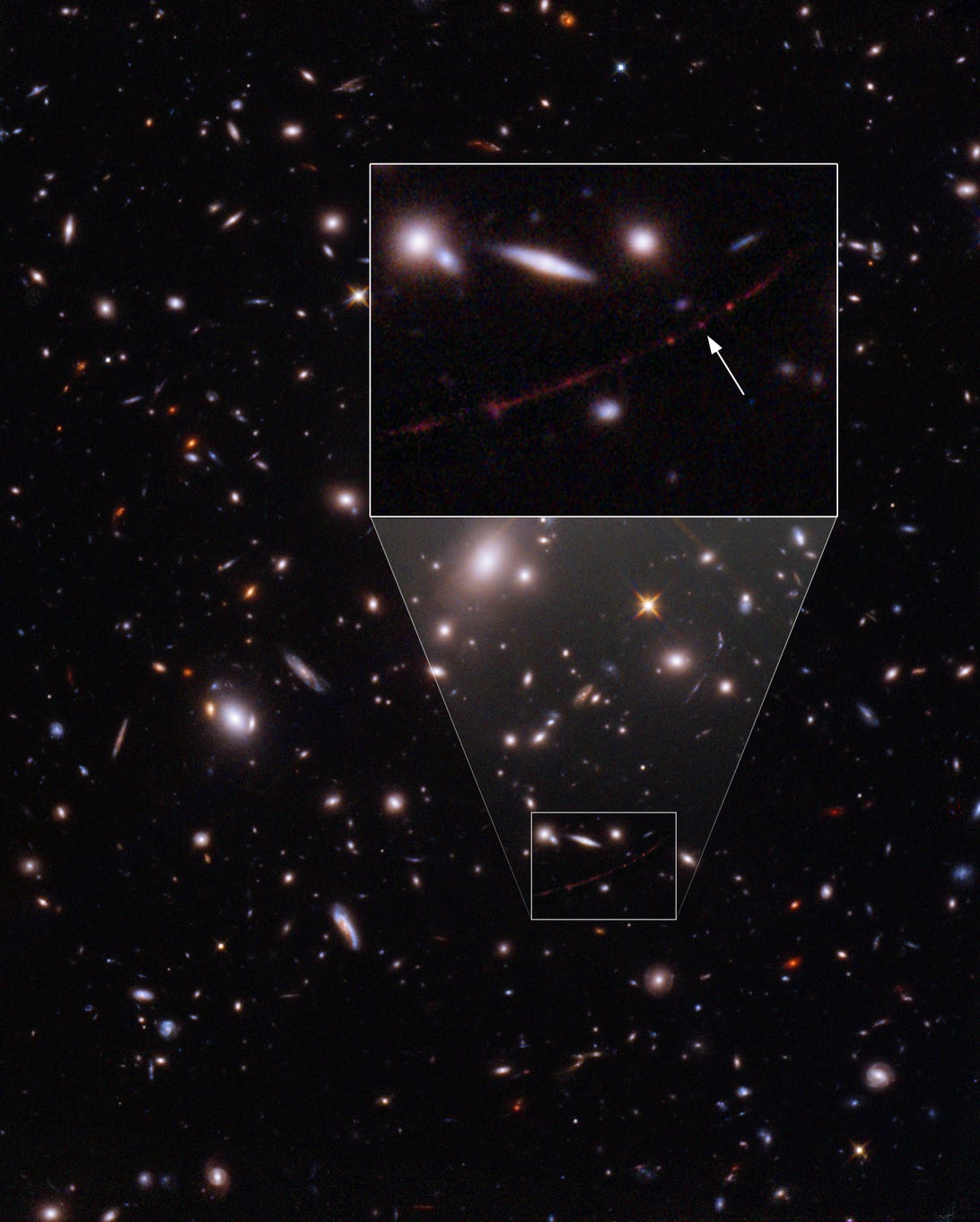
Earendel (indicated with arrow) is positioned along a ripple in space-time that gives it extreme magnification, allowing it to emerge into view from its host galaxy, which appears as a red smear across the sky.
NASA, ESA, Brian Welch, Dan CoeOn Wednesday, NASA announced a discovery our minds can barely fathom.
The Hubble Space Telescope spotted a star that's at least 50 times the mass of our sun, glows several million times brighter and is nestled so utterly deep in space that it took a colossal 12.9 billion years for its light to reach Earth. It was born when the cosmos was at just 7 percent its current age and, after accounting for the universe's continuous expansion, presently floats 28 billion light-years away.
This glimmering leviathan is the farthest, oldest single star ever seen by humankind.
And after some deliberation, scientists gave the cosmic artifact a rather touching name: Earendel, which means "morning star" in Old English.
"Studying Earendel will be a window into an era of the universe that we are unfamiliar with, but that led to everything we do know," Johns Hopkins University astronomer Brian Welch said in a statement. Welch is lead author of a paper published Wednesday in the journal Nature that describes Earendel's discovery.
But before we go any further into how this special star arrived in our line of vision, and what it can tell us about our past, let's put Earendel into perspective for our mere mortal brains.
Our sun is a whopping 109 times the size of Earth, and Earendel is between 50 and 500 times bigger than that. Our sun is nearly 93 million miles (149,669,000 kilometers) from us, yet despite this distance, it's the sole lightbulb managing to illuminate our whole world. Earendel is millions of times brighter than our sun.
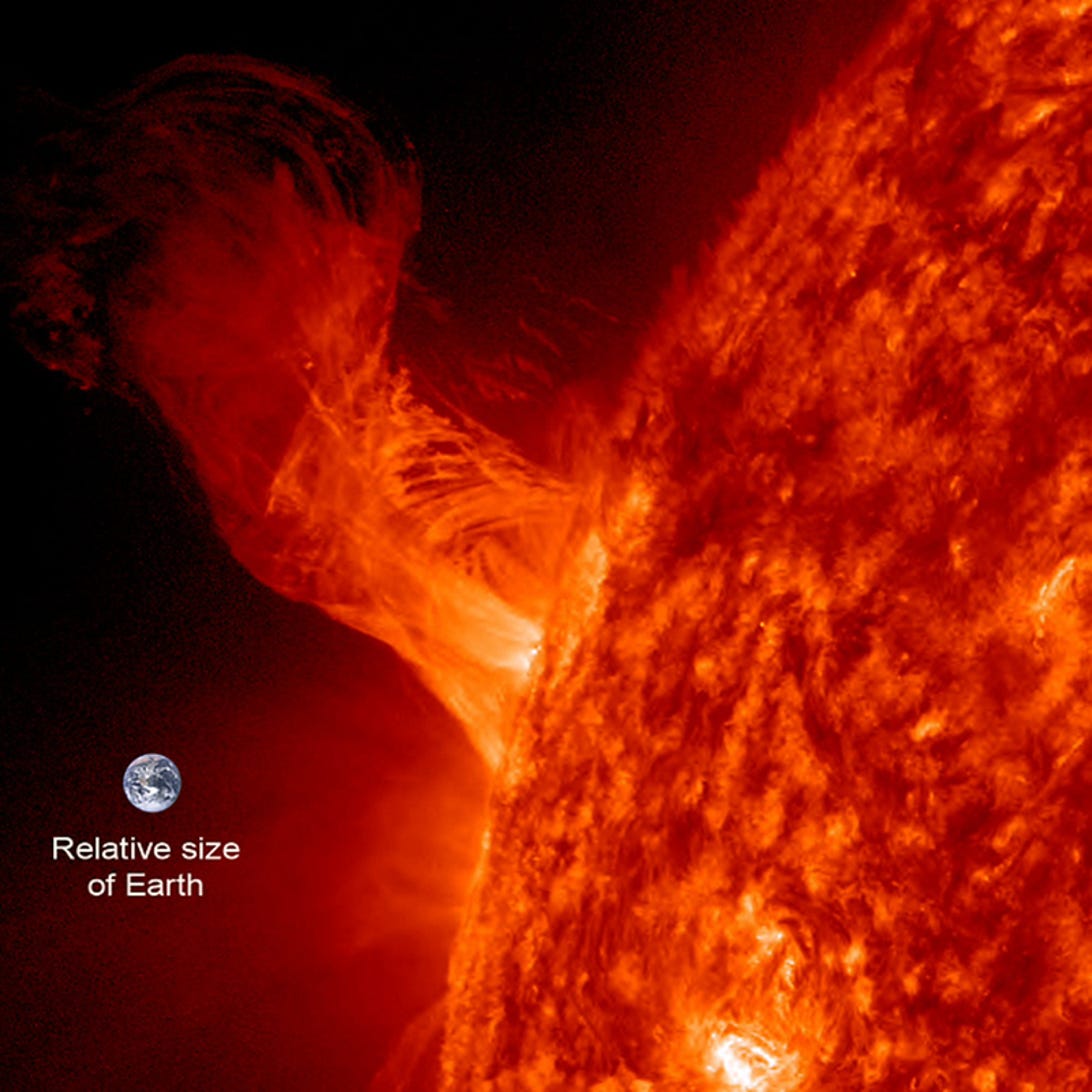
A size comparison of the Earth and sun. Wow.
NASAAnd finally, the previous distance-record-holding star, dubbed Icarus and located by Hubble in 2018, came into existence when the universe was at about 30 percent its current age; it took 9 billion years for Icarus' light to reach us. Earendel is much (much) more ancient and remote than even that.
With Earendel, we're looking at light that originated just after the Big Bang -- photons that journeyed for many millenia to reach human eyes.
"As we peer into the cosmos, we also look back in time, so these extreme high-resolution observations allow us to understand the building blocks of some of the very first galaxies," Victoria Strait, an astronomer at the Cosmic Dawn Center in Copenhagen and co-author of the study, said in a statement.
Welch offered a metaphor: "It's like we've been reading a really interesting book, but we started with the second chapter, and now we will have a chance to see how it all got started."
Photographing a star 28 billion light-years away
It sounds like a fable.
For Hubble to lay eyes on Earendel, a crowd of faraway galaxies needed to perfectly align and warp the fabric of space and time with ultra-high precision.
"Normally, at these distances, entire galaxies look like small smudges, with the light from millions of stars blending together," Welch explained. That's why the team was surprised to see a single star, Earendel, sticking out. But there Earendel was, thanks to a fascinating phenomenon called gravitational lensing. In a nutshell, here's what that is.
According to Albert Einstein's theory of general relativity, space and time are connected as a sort of fabric. Super massive objects in this fabric, like planets or black holes, make it morph, or warp, inward. Imagine placing a fifty pound weight onto a trampoline; the trampoline will warp inward and form a curve. It's the same idea.
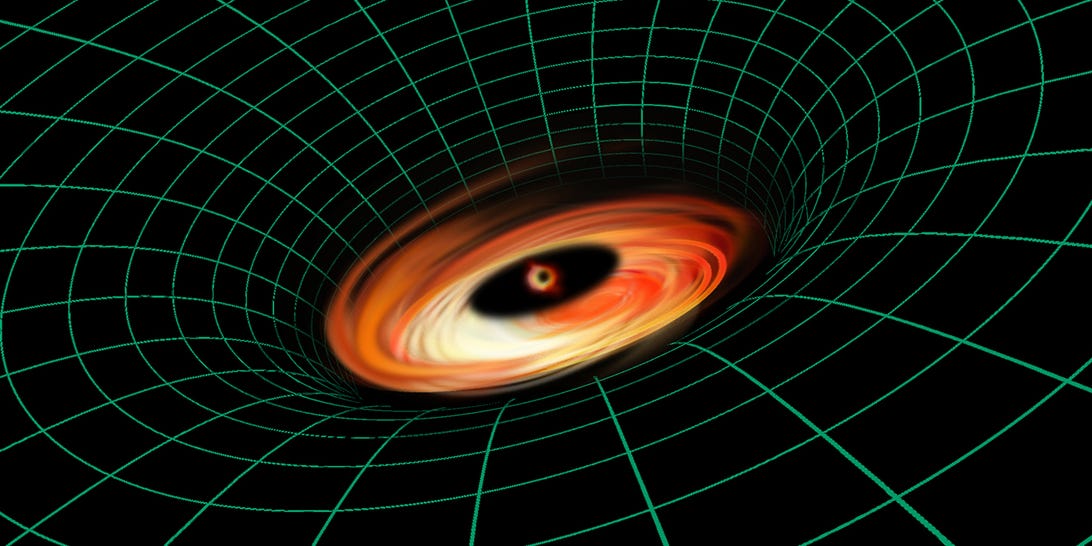
An illustration depicting how the fabric of space and time warps. Though, keep in mind, this is a 2D image. In reality, this happens in higher dimensions, which our really hard for our brains to comprehend.
NASA/ESA/A. Feild and L. Hustak (STScI)And the more massive the object, the bigger the curve. That's why black holes are known as the cream of the warping crop. But regardless, the universe is filled with a bunch of these curves because it has lots of massive objects, and smaller objects tend to fall along those curves.
For instance, humans are presumably planted on Earth because we're falling along Earth's curve -- in terms of the trampoline analogy, we're like one pound weights falling along the fifty pound weight's curve. Einstein's theory says that this falling-along-curves concept is what we perceive as gravity, but returning to the miracle of Earendel, these curves also sometimes mess with our view of outer space.
Basically, when the most massive cosmic bodies come together, aka galaxy clusters, which hold billions of stars and several black holes, massive warping happens, too. This crazy warp is strong enough to affect light nearby, thereby distorting and magnifying the luminescence of cosmic objects in the vicinity.
With just the human eye and a telescope, even one like Hubble, these objects are just too far away or faint to see, but once light illuminating them is run through the cluster curve, they come into focus. This is called gravitational lensing, and it's how Welch and fellow researchers spotted Earendel.
"The galaxy hosting this star has been magnified and distorted by gravitational lensing into a long crescent that we named the Sunrise Arc," Welch said.
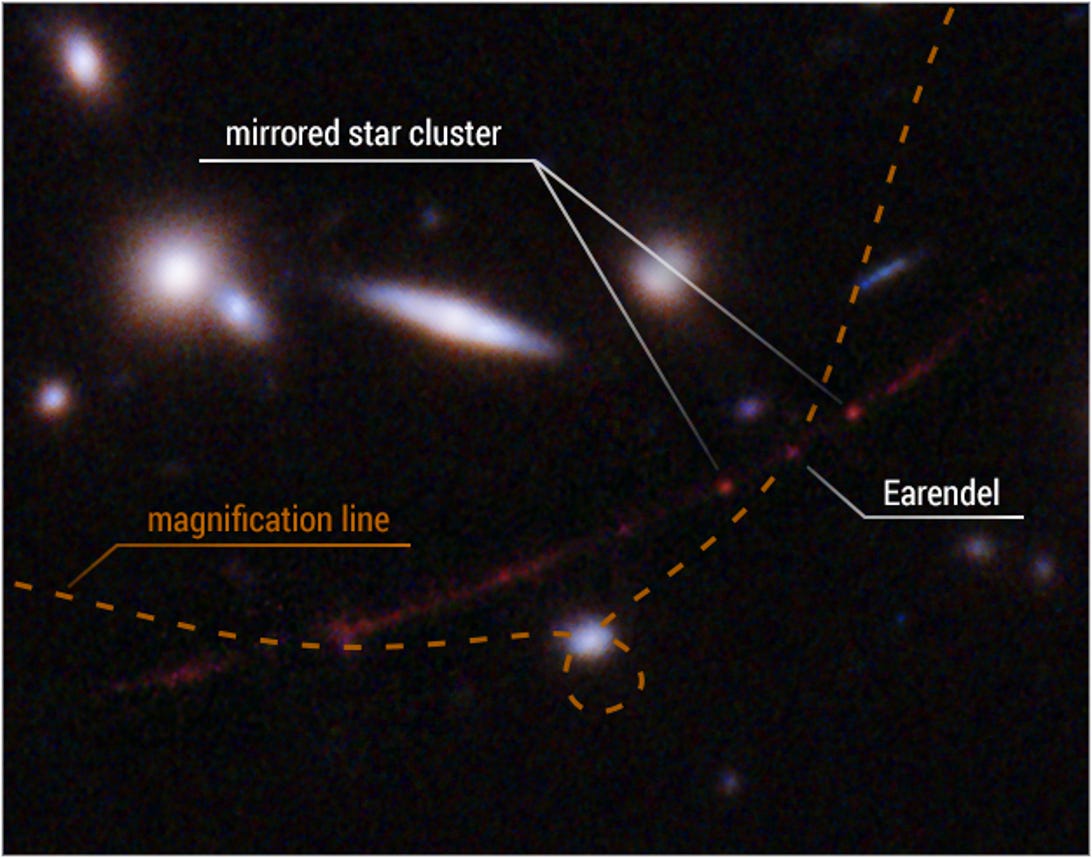
A close-up view of Earendel.
NASA, ESA, Brian Welch, Dan CoeBut perhaps most astonishing in this discovery is that every galaxy cluster on the way to Earendel oriented itself in such a way as to warp the single star's light and make it stick out in the Sunrise Arc.
NASA calls it a stroke of luck.
NASA's James Webb Telescope to study Earendel
Looking to the future, Earendel is kind of the perfect subject for NASA's James Webb Space Telescope, which launched late last year and is the agency's spectacular endeavor to image the cosmos as they were right after the Big Bang. It's built to examine the universe across vast timelines.
The machine is armed with a highly specialized toolkit that can detect photons from light-years upon light-years away, scan for possible alien life lurking in deep space, elucidate the origins of black holes and, relevantly to Earendel, examine extremely old stars in unprecedented detail.
"With James Webb, we will be able to confirm that Earendel is indeed just one star, and at the same time quantify which type of star it is," Sune Toft, leader of the Cosmic Dawn Center and professor at the Niels Bohr Institute, said in a statement. Toft participated in the Earendel study.
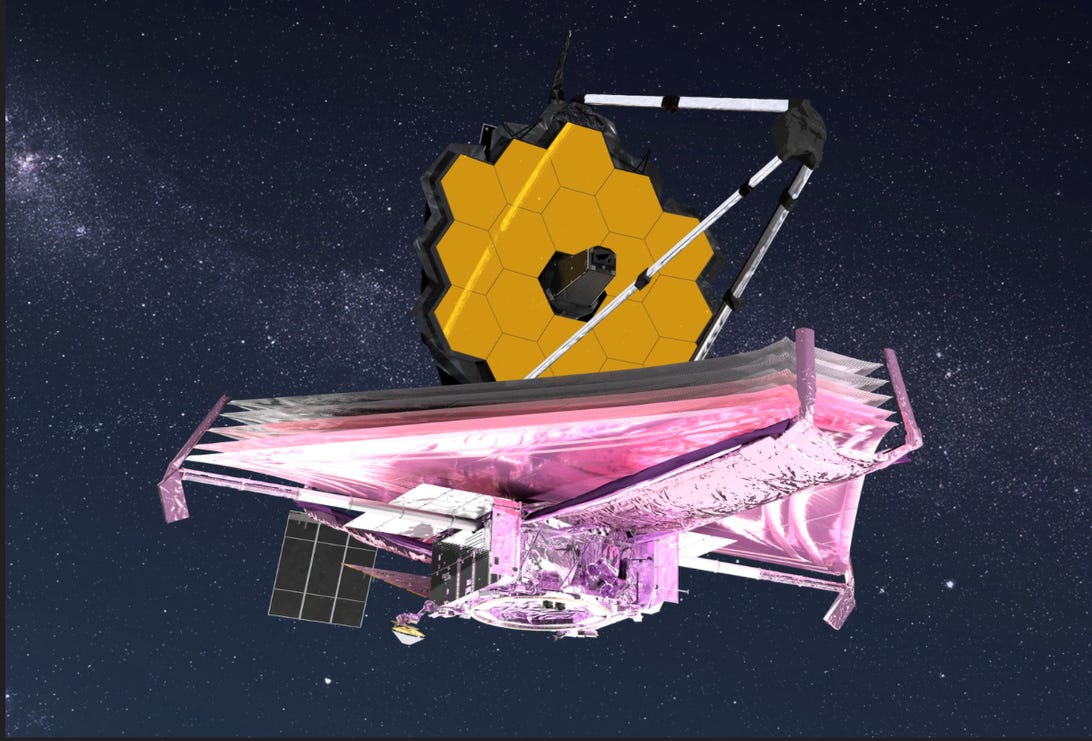
The James Webb Space Space Telescope in an artist's rendering.
NASA GSFC/CIL/Adriana Manrique GutierrezWebb's equipment could even shed light on Earendel's chemical composition, which, per the researchers, might be the biggest deal of all.
At the time Earendel was born, the research team says, the universe wasn't yet filled with the regular set of heavy elements that give rise to the stars closer to us -- younger stars. "Earendel could be the first known example of the universe's earliest generation of stars," Toft said, and "this would suggest Earendel is a rare, massive metal-poor star," Dan Coe, an astronomer at the Space Telescope Science Institute in Baltimore and co-author of the study, said in a statement.
But in the grand scheme of things, Webb might well be a step ahead.
If you recall, when the telescope blasted off, it left the world in a flurry of wonder because it's poised to answer questions we might've never even thought to ask and to find objects we could never have dreamed of. "With Webb, we may see stars even farther than Earendel, which would be incredibly exciting," Welch said. "We'll go as far back as we can.
"I would love to see Webb break Earendel's distance record."









 Add Category
Add Category